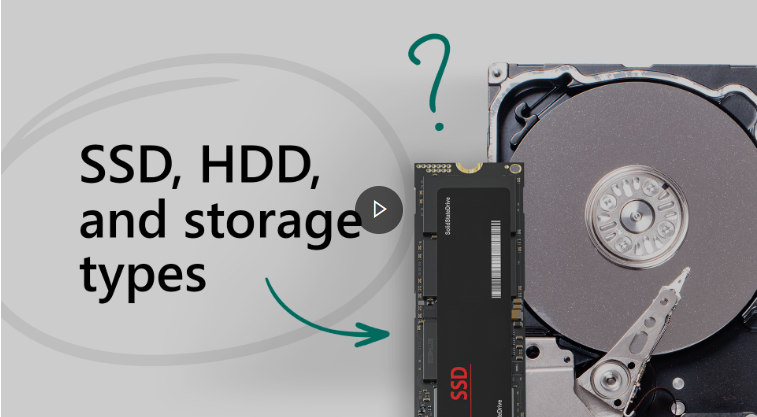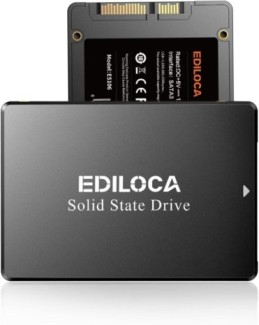Sure! Here is a detailed explanation of SSDs (Solid State Drives): 512gb Ssd For Laptop Price In India
Solid State Drives (SSD) Overview
Solid State Drives (SSDs) are a type of non-volatile storage media that stores persistent data on solid-state flash memory. Unlike traditional hard disk drives (HDDs), which have spinning disks and movable read/write heads, SSDs have no moving parts, which provides several advantages. 512gb Ssd For Laptop Price In India
- Best Online Job Portals for IT Professionals
- Freelance vs Full-Time Jobs – कौन सा सही रहेगा?
- 5 Free Computer Science Courses You Can’t Miss On SWAYAM Portal
- Government vs Private IT Jobs – कौन सा बेहतर है?
- Top 10 IT Jobs in India – Salary & Career Growth
Table of Contents

Key Components of an SSD
- NAND Flash Memory:
- Cells and Pages: Data is stored in cells that are grouped into pages. Multiple pages are grouped into blocks. NAND flash memory can store one bit per cell (Single-Level Cell, SLC), two bits per cell (Multi-Level Cell, MLC), three bits per cell (Triple-Level Cell, TLC), or four bits per cell (Quad-Level Cell, QLC).
- Controller: This is the brain of the SSD. It manages data storage and retrieval, error correction, wear leveling, and garbage collection.
- Interface:
- SATA: Traditional interface for HDDs, also used by many SSDs. Limited by the SATA III speed cap of 6 Gbps.
- NVMe (Non-Volatile Memory Express): Designed specifically for SSDs, providing higher speeds and lower latency by connecting directly to the PCIe bus.
- DRAM Cache:
- Used to temporarily store data before writing to the NAND flash memory, improving speed and efficiency.
Types of SSDs
- SATA SSDs:
- Use the SATA interface, compatible with most motherboards and easier to upgrade from an HDD.
- Speed is limited by the SATA III interface (up to 550 MB/s read/write speeds).
- NVMe SSDs:
- Connect directly to the PCIe bus, offering significantly higher speeds (up to 3,500 MB/s read/write speeds and beyond).
- Suitable for high-performance computing, gaming, and professional applications.
- M.2 SSDs:
- A form factor that can support both SATA and NVMe interfaces.
- Compact and suitable for laptops and small form factor PCs.
- U.2 SSDs:
- Use the PCIe interface and are commonly found in enterprise environments.
- Offer high performance and endurance.
Advantages of SSDs
- Speed:
- Faster boot times, application load times, and overall system responsiveness.
- Superior read/write speeds compared to HDDs.
- Durability:
- No moving parts, making them more resistant to physical shock and damage.
- Lower failure rates and longer lifespan.
- Energy Efficiency:
- Consume less power than HDDs, leading to longer battery life in laptops.
- Noise:
- Completely silent operation due to the absence of mechanical parts.
Disadvantages of SSDs
- Cost:
- Generally more expensive per gigabyte than HDDs, although prices are decreasing.
- Capacity:
- Higher capacity SSDs are available but are significantly more expensive.
- HDDs still offer more storage space for the same price point.
- Write Endurance:
- NAND flash memory has a limited number of write cycles. Techniques like wear leveling are used to prolong the lifespan of the SSD.
SSD Maintenance and Optimization
- TRIM Command:
- Helps maintain SSD performance by allowing the operating system to inform the SSD which blocks of data are no longer in use and can be wiped internally.
- Firmware Updates:
- Keeping the SSD firmware updated can improve performance and reliability.
- Avoid Defragmentation:
- Unlike HDDs, defragmentation is not necessary and can reduce the lifespan of an SSD due to unnecessary write operations.
SSD Use Cases
- Consumer Use:
- Operating systems, games, and applications for faster load times.
- Ideal for laptops due to energy efficiency and durability.
- Enterprise Use:
- Databases, virtual machines, and high-transaction environments benefit from SSDs’ speed and reliability.
- Data centers utilize SSDs for their high IOPS (Input/Output Operations Per Second).
- Creative Professionals:
- Video editing, 3D rendering, and other data-intensive tasks benefit from the high-speed data access provided by SSDs.
Future of SSDs
- 3D NAND Technology:
- Stacking layers of NAND cells to increase density and storage capacity while reducing cost.
- New Interfaces and Protocols:
- Continued development of faster and more efficient interfaces and protocols, such as PCIe 4.0 and PCIe 5.0.
- Increased Adoption:
- As prices continue to decrease, SSDs are becoming more accessible to mainstream consumers and will likely replace HDDs in most applications.
Sure, here’s a detailed overview of Solid-State Drives (SSDs):
Solid-State Drives (SSDs) – Detailed Information
1. Introduction to SSDs
What is an SSD?
A Solid-State Drive (SSD) is a type of non-volatile storage device that stores persistent data on solid-state flash memory. Unlike traditional hard drives (HDDs), which use spinning disks and movable read/write heads, SSDs have no moving parts, making them faster, more reliable, and more energy-efficient.
2. History and Development
Early Development:
- SSD technology dates back to the 1950s and 1960s, where early solid-state storage devices used magnetic core memory and semiconductor memory.
- The 1970s and 1980s saw the development of early SSDs used in supercomputers and military applications.
Modern SSDs:
- The development of NAND flash memory in the late 1980s and early 1990s was a significant milestone.
- The first commercial SSDs appeared in the late 2000s, becoming more mainstream in the 2010s with improvements in performance, capacity, and affordability.
3. How SSDs Work
Components of an SSD:
- Controller: Manages data storage and retrieval, wear leveling, error correction, and garbage collection.
- NAND Flash Memory: Non-volatile storage that retains data without power. It consists of cells that store bits of data.
- Cache (DRAM or SLC Cache): Temporarily holds data to speed up read/write operations.
Types of NAND Flash Memory:
- SLC (Single-Level Cell): Stores 1 bit per cell. High performance, durability, and cost.
- MLC (Multi-Level Cell): Stores 2 bits per cell. Balance of performance, durability, and cost.
- TLC (Triple-Level Cell): Stores 3 bits per cell. Higher capacity and lower cost but reduced performance and durability.
- QLC (Quad-Level Cell): Stores 4 bits per cell. High capacity and lowest cost but lowest performance and durability.
4. Types of SSDs
Based on Interface:
- SATA SSDs: Use the SATA interface. More affordable but slower compared to NVMe SSDs.
- NVMe SSDs: Use the PCIe interface. Significantly faster due to direct communication with the CPU.
Based on Form Factor:
- 2.5-Inch SSDs: Traditional hard drive form factor, commonly used in laptops and desktops.
- M.2 SSDs: Compact form factor that plugs directly into the motherboard. Available in SATA and NVMe variants.
- U.2 SSDs: Similar to M.2 but with a different connector. Used in enterprise environments.
- PCIe SSDs: Plug directly into a PCIe slot on the motherboard. High-performance and used in gaming and professional applications.
5. Advantages of SSDs
Speed:
- Faster read and write speeds compared to HDDs.
- Reduced boot times, quicker file transfers, and improved overall system responsiveness.
Reliability:
- No moving parts, resulting in higher durability and resistance to physical shock and vibration.
- Lower failure rates compared to mechanical drives.
Energy Efficiency:
- Consume less power, leading to longer battery life in laptops and reduced energy costs in data centers.
Noise and Heat:
- Silent operation as there are no moving parts.
- Generate less heat compared to HDDs.
6. Disadvantages of SSDs
Cost:
- Higher cost per gigabyte compared to HDDs, although prices have been decreasing over time.
Capacity:
- SSDs typically offer lower maximum capacities compared to HDDs, though high-capacity SSDs are becoming more available.
Wear and Longevity:
- Limited write cycles due to the nature of NAND flash memory. Modern SSDs use wear leveling and other techniques to extend lifespan.
7. Applications of SSDs
Consumer Use:
- Personal computers, laptops, and gaming consoles for faster performance and improved user experience.
Enterprise Use:
- Data centers and servers for faster data access, reduced latency, and improved reliability.
- High-performance computing and applications requiring fast storage access.
Specialized Use:
- Embedded systems, industrial applications, and portable devices like smartphones and tablets.
8. SSD Lifespan and Maintenance
Factors Affecting Lifespan:
- Write endurance: Limited write cycles before cells wear out.
- Usage patterns: Frequent large file writes can reduce lifespan.
Maintenance Tips:
- Regular firmware updates to ensure optimal performance and reliability.
- Avoid running the SSD close to full capacity to maintain performance and longevity.
- Use of SSD-specific tools for health monitoring and performance optimization.
9. Future Trends and Developments
Technological Advancements:
- Continued improvements in NAND flash technology, including new cell structures and materials.
- Development of 3D NAND, stacking multiple layers of cells to increase capacity and performance.
Market Trends:
- Increasing adoption of NVMe SSDs in consumer and enterprise markets.
- Growing popularity of high-capacity SSDs as prices continue to decrease.
- Integration of AI and machine learning for advanced data management and predictive maintenance.
10. Conclusion
SSDs represent a significant advancement in data storage technology, offering substantial benefits over traditional hard drives in terms of speed, reliability, and energy efficiency. As technology continues to evolve, SSDs are expected to become even more prevalent across a wide range of applications, from consumer electronics to enterprise data centers. Understanding the different types, advantages, and limitations of SSDs can help users make informed decisions when choosing storage solutions.
512gb Ssd For Laptop Price In India
This comprehensive overview covers the key aspects of SSDs, from their basic operation to their various applications and future trends. If you need more specific details or additional information, feel free to ask!
I512gb Ssd For Laptop Price In India512gb Ssd For Laptop Price In India512gb Ssd For Laptop Price In India512gb Ssd For Laptop Price In India512gb Ssd For Laptop Price In India512gb Ssd For Laptop Price In India512gb Ssd For Laptop Price In India512gb Ssd For Laptop Price In India512gb Ssd For Laptop Price In India512gb Ssd For Laptop Price In India512gb Ssd For Laptop Price In India512gb Ssd For Laptop Price In India512gb Ssd For Laptop Price In India512gb Ssd For Laptop Price In India512gb Ssd For Laptop Price In India512gb Ssd For Laptop Price In India512gb Ssd For Laptop Price In India512gb Ssd For Laptop Price In India512gb Ssd For Laptop Price In India512gb Ssd For Laptop Price In India512gb Ssd For Laptop Price In India512gb Ssd For Laptop Price In India


6 thoughts on “512gb Ssd For Laptop Price In India”